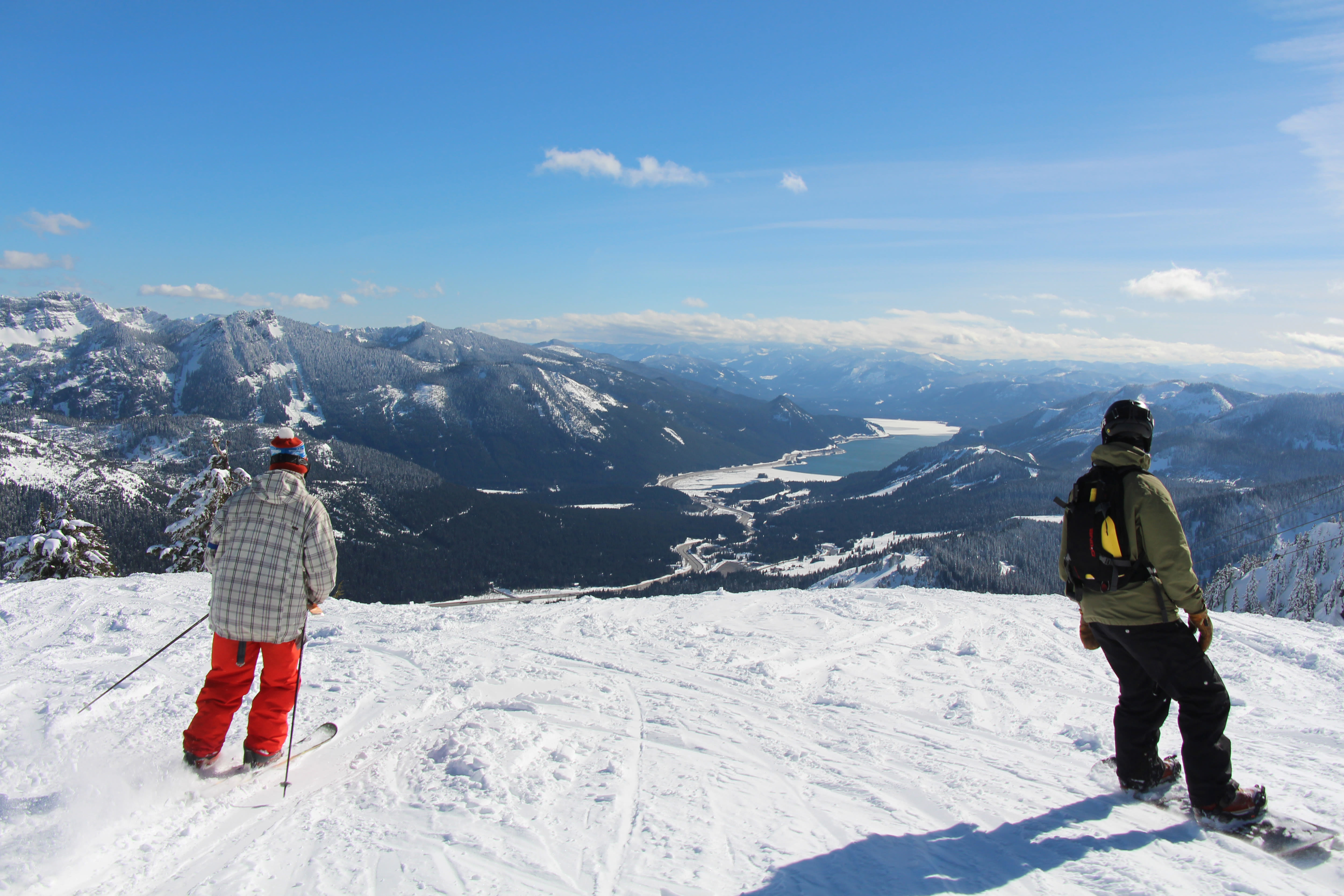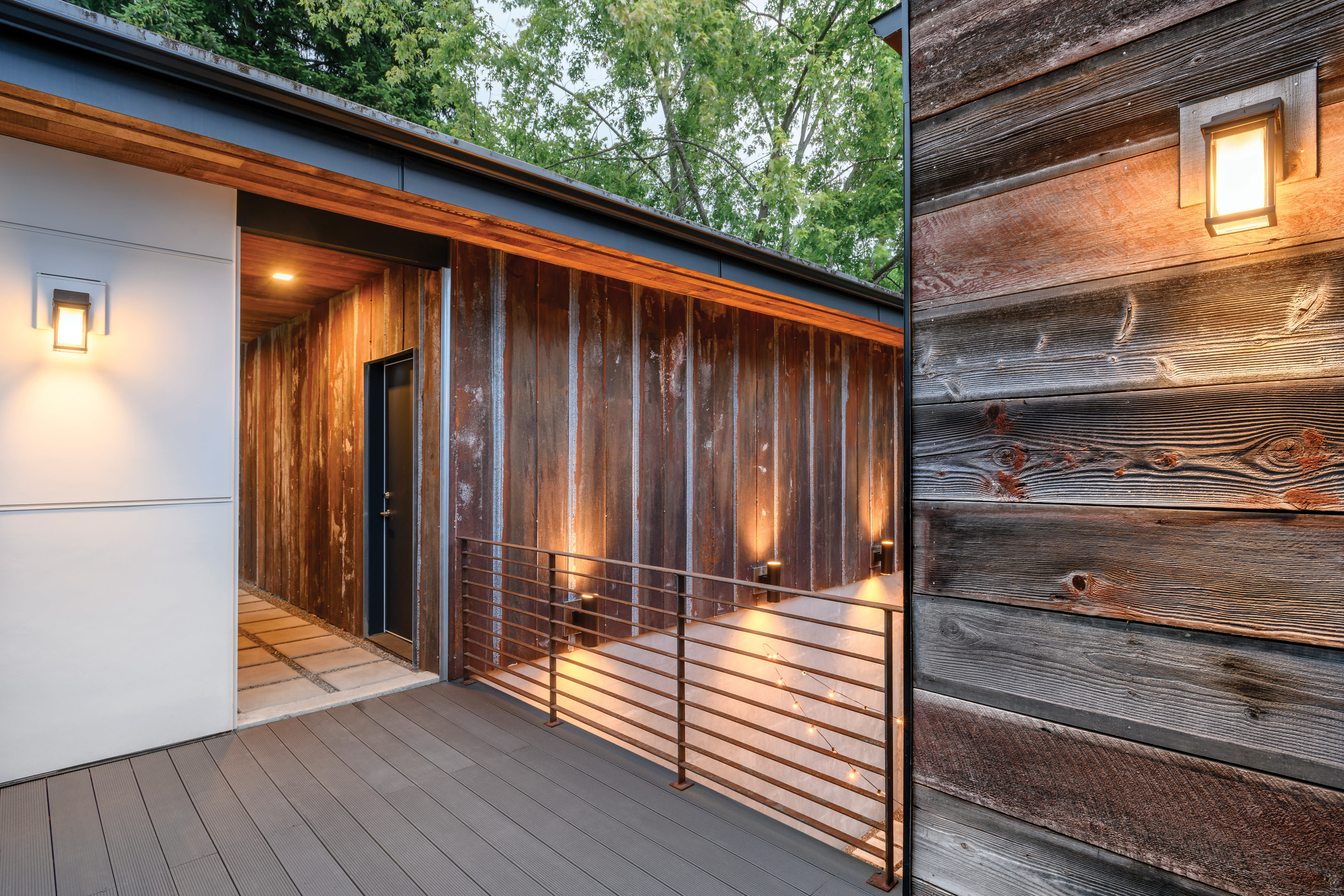
A Natural Take on a Modern Mount Baker Home
Photograph by Will Austin
After five years in a one-room loft just off the Pike-Pine corridor, Liga Mezaraups and her husband, Ian Wright, felt like they were living on top of each other. “Although we love each other a lot,” Liga says, “we probably don’t love each other so much that we want to be in the same room all the time.” To compound matters, the two health care professionals—he’s an anesthesiologist, she’s a nursing administrator—were disrupting each other’s varied schedules.
The search began for a new place. They wanted walkability and bikeability, so they hewed close to the city center they knew: Capitol Hill, Madrona, Madison Park. But a couple weekend drives through Mount Baker—its diversity, its familial feel, parents teaching their kids to ride bikes, denizens walking their dogs—opened them up to the neighborhood, and when they found a modern, four-story home a quick walk from the light rail station and Lake Washington, they fell in love. It was a house built on spec that seemed made just for them.
John Trieger of JT Architecture designed the home to blend with the land and the neighborhood. Yet he had to meet the rigorous passive-model environmental standards that builder Dwell Development demanded: a five-star Built Green certification—triple-paned windows, thickly insulated walls, heat-recovery ventilation, airtight sealing. With solar panels the house could achieve near net zero energy cost.
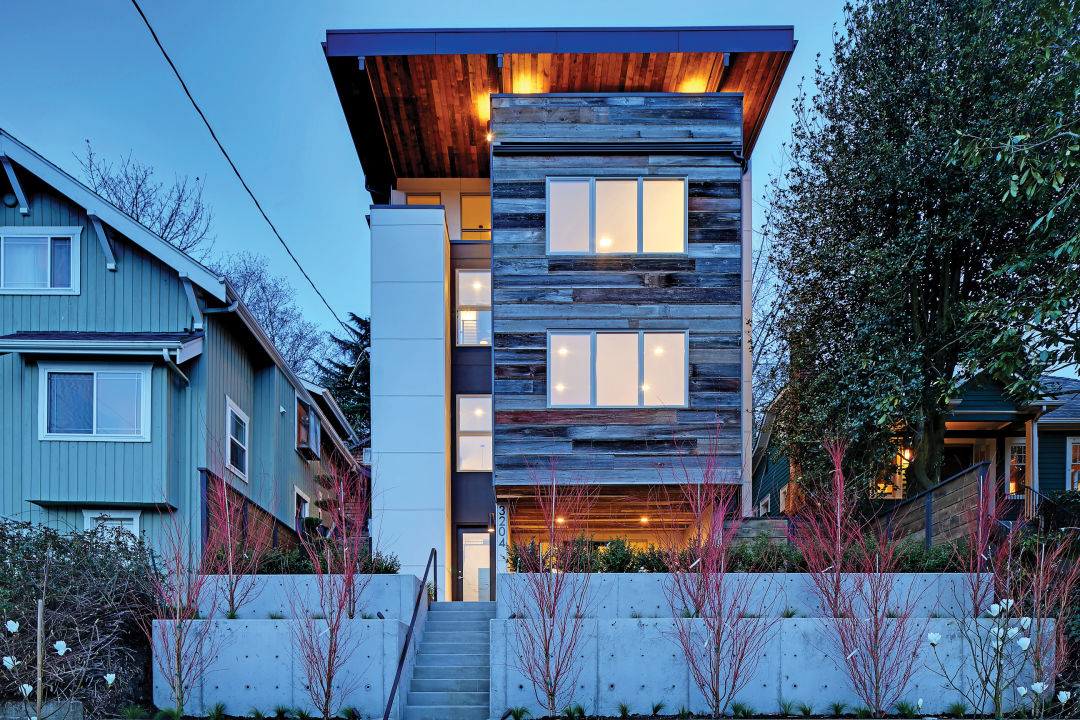
The house is integrated into the 20-foot incline it’s built on.
Image: Tucker English
From a design standpoint, its plot of land, previously undeveloped, was the first hurdle: A slope rises more than 20 feet from street level to the alley behind the house. Instead of fighting the steep grade, Trieger embraced the topography, creating a bridge to the detached garage, and then introducing outdoor spaces into the structure’s four stories with decks and a grotto and a covered patio.
That vision—folding the natural world into a modern, high-functioning design—carries over into the house’s aesthetics, too. Large windows invite natural light and tree views, while century-old wood taken from an Eastern Oregon barn functions as outdoor siding and softens the design’s modern angularity so that it better melds with its Mount Baker context. “A lot of builder-boxes reflect all the high-tech stuff that’s going on in Seattle,” Trieger says, “but they forget about the natural beauty that was here originally.”
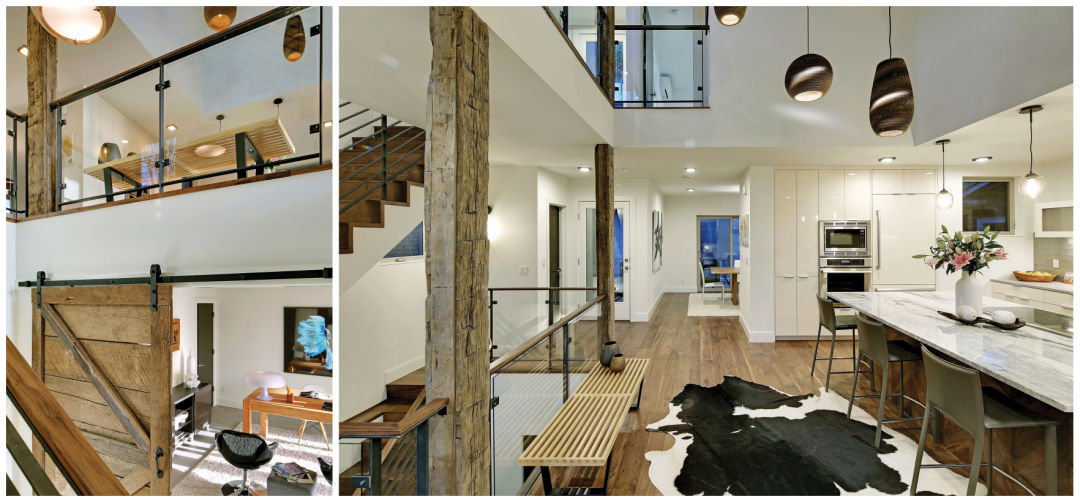
Developers repurposed siding from an Oregon barn to create a rustic sliding door; hand-hewn beams and black walnut floors soften the home’s clean modernism.
Image: Tucker English
Throughout the interior other pieces of reclaimed wood culled from around the Northwest reassert that naturalism. “Abbey, my wife, is our designer,” says Dwell Development’s Anthony Maschmedt, “and she has these guys in her call list that live out in the woods and have mills and take down old cantinas and bars.” So a maple bathroom countertop from Maple Valley, a sliding door made from that same Oregon siding, sustainably harvested Montana black walnut for the floors—each accents the clean, white-walled, contemporary layout.
Hand-hewn wood from Montana wraps around the beams that frame the house’s centerpiece, a light-filled stairwell. In a 3,180-square-foot house, stretched across four stories, Trieger knew he wanted not only to integrate stairs into the design, but to celebrate them, to make the house’s various levels cohere into a singular space through an open core.
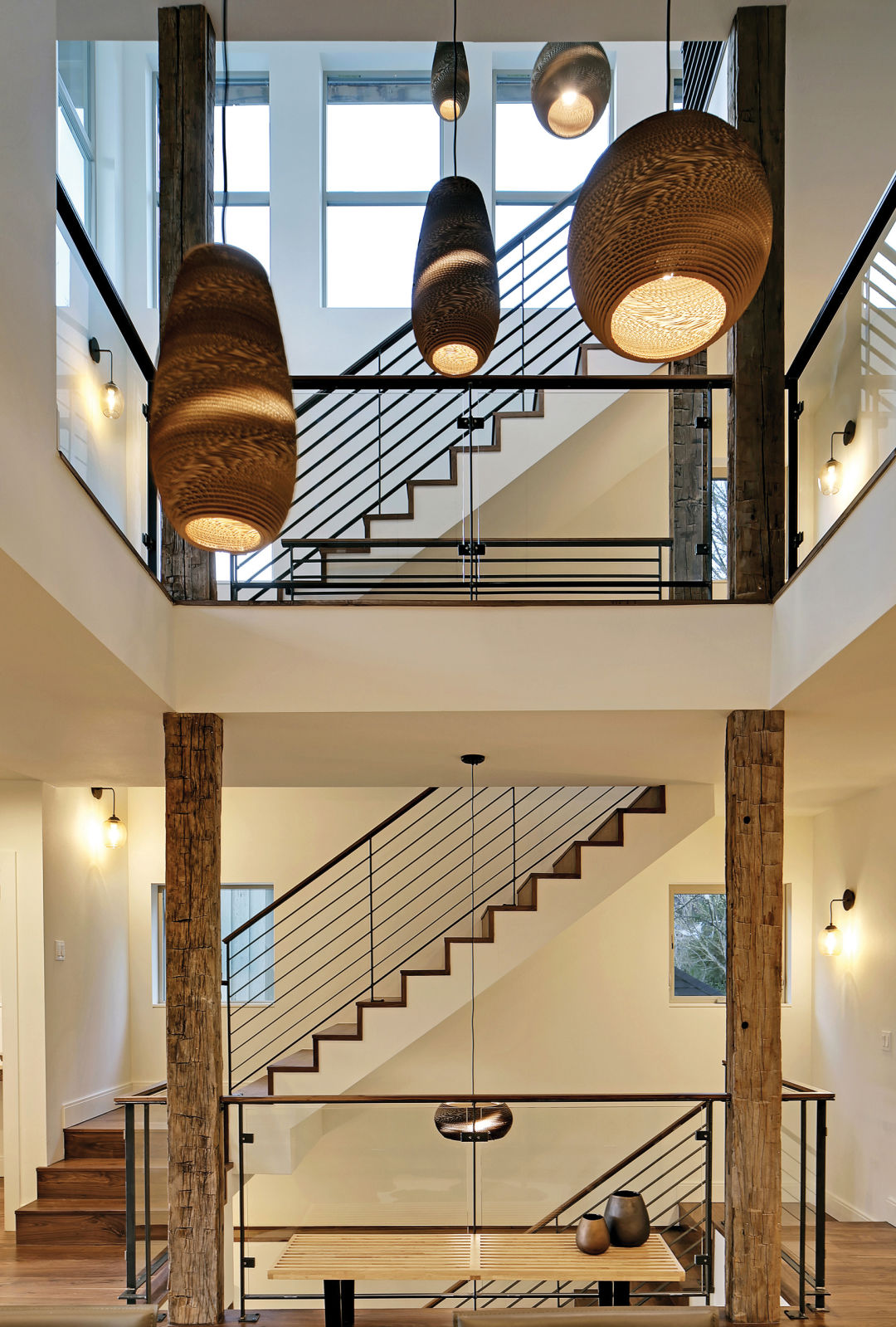
A stairwell bathed in light is the home’s centerpiece.
Image: Tucker English
When she first considered it, Liga worried the home would be too big for a couple and their two cats. Instead, because of an elegant floorplan that merges its many levels, Liga and Ian use the whole space, and the house feels connected, to itself within, to the land it’s on—the pre-existing trees, the steep grade—and to its neighborhood. And the cats? “They love it. After living in a condo, they’ve lost weight climbing the stairs.”
Updated 10:05am on August 23, 2018 to reflect that the home was Built Green, not Green Built.
